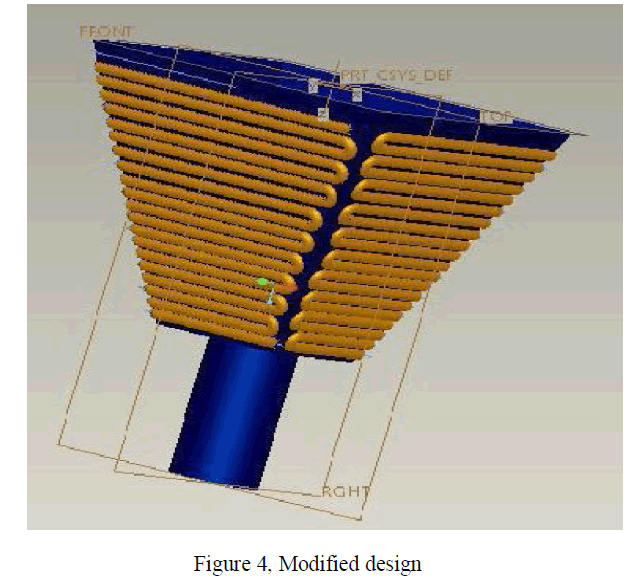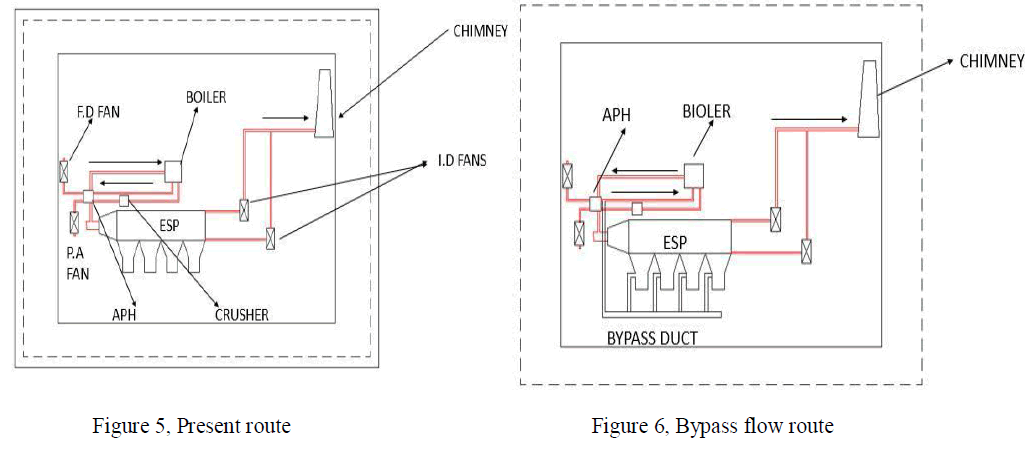ISSN ONLINE(2319-8753)PRINT(2347-6710)
ISSN ONLINE(2319-8753)PRINT(2347-6710)
Sundarrajan.S1 and S.Mohammed Shafee2
|
| Related article at Pubmed, Scholar Google |
Visit for more related articles at International Journal of Innovative Research in Science, Engineering and Technology
Energy conservation is the very major concern in recent scenarios, mainly in power plants. The following work is done in accordance with North Chennai Thermal Power Station. In power plants, Electrostatic precipitators (ESPs) are utilized to filter the fly ash from exhaust flue gas before passing it to the atmosphere. The fly ash is collected down in the ESP hoppers, which are provided with heat by the application of heating coils. The function of heating coils is to heat the ESP hoppers and make a free flow of ash while removal from hopper. Power supplied to heat the coils is taken as the auxiliary power consumption from the total power produced in the plant. The main purpose of this work is to eliminate this unwanted auxiliary power consumption so far consumed for the purpose of heating ESP hopper heaters, by replacing the heaters with waste heat recovered from boiler in a conventional thermal power plant. By performing this work, auxiliary power consumed for this entire hoppers can be saved, which can save the supply and add economic advantage to the plant. This can be done by using the hot air source tapped from secondary air duct before the entry into wind box of the boiler. This is atmospheric air which passes through a regenerative Air Preheater (APH) to procure hot air to burn the pulverized coal. Thus taking small mass flow of air by tapping the duct, the heat source can be obtained. The temperature of hot air required, mass flow rate, heat exchanging method, modified hopper design are the main parameters considered and optimised. This new retrofit in the thermal power plants can save enormous amount of power supplied earlier and can add economic benefits to all thermal power stations across our country.
Keywords |
| Air Preheaters, Electrostatic Precipitator (ESP), Heat Exchanger, Hoppers. |
INTRODUCTION |
| The ESP is located in the path between furnace and chimney. The main work of it is to remove the fly-ash in the flue gas before setting it to the atmosphere. It works in the principle of corona discharge. There are hoppers provided at the bottom of ESP for collection of fly-ash which is removed from the flue gas and the collected ash will go to the ash pit. During this collection and flow of fly-ash inside the hopper, the temperature is reduced because of dumping and condenses and sticks to the inner surface of the hopper. This leads to choking of hopper and breakdown of ESP. to avoid this problem, heating coils are provided at the bottom of hoppers to give a constant heat source, so that this fly-ash will not stick to the inner surface of the hopper and ESP. the heating coils capacity given for each hopper is 6kW each. Totally there are 144 hoppers combining all three units in the plant. The temperature currently maintained by using these heating coils is around 120O-130OC. This results in the fall of capacity factor of the plant. Heat source has to be given to hoppers but not at the cost of capacity factor. |
 |
METHODOLOGY |
| The method here used includes, a basic study of entire plant workings and deep study on the accessories on which tapping has to be done, collection and allocation of necessary values and data from operational manuals, obtained values from divisional engineers, supervisors, service books etc. With the data collected, the amount of Mass flow rate/ Volume flow rate of hot air required to make substitution for the set of heating coils of capacity 6kW for each hopper to make temperature of 120°-130°C around the surface of hopper. |
| The location is fixed near the final bend, just in front of thewind box where hot air tapping is to be done. The distance between the source and sink is around 40 meters. So the temperature drop due to heat transfer in the duct, with the specified insulation thickness, is calculated from the algorithm taken from National Institute of Building Science website. The hot air taken from the boiler are split up to various twelve different ways in the form of pipelines along with flow control valves at the necessary locations. |
MODELLING |
| Remodelling of hopper is very important work amongst others. This is because the earlier design had provisions for heating coils placement. But the new design to be implemented is going to work without heating coils. New model includes the passage around hopper which is made by placement of pipes for hot gases to flow on the outer surface of the hopper. |
 |
| The modified hopper design paves the way for the circulation of hot gases around the hopper. This makes the inner surface of the hopper hot which makes the free flow of ash while removal. There are no ideal considerations followed for the flow pattern and pipeline turns selection. It depends upon the dimensions of the hoppers utilised in various plants. The pipe here selected is 1.5 inch of schedule 40 of mild steel material. This is taken because of the material cost and ability to work at higher temperatures. |
| Heat resistant paints can be applied on the inner surface of the pipes so that it cannot conduct heat which is meant for heating hoppers. Therefore the losses are considered less. Similarly outer insulation will be done by glass wool which can prevent the heat flow to the atmosphere. Glass wool is considered because it is cheaper compare to PU foam and are already in the utilisation for insulation of boiler and steam turbines. Hot air delivery to hoppers is done automatically because the exit pipe where the Induced draft fan connected has very low pressure when compare to the Forced draft fan pressure. So there is no need of additional flow devices such as fans, blowers, boosters, and etcetera. |
 |
| The tubes are welded on the surface of the hopper plate in a serpentine manner. This makes the flow even on all the four sides of hopper. Here entry is made at bottom because the ash is dumped at bottom where its temperature loss is maximum. |
ESTIMATION |
| Estimation includes the calculation of sufficient mass flow rate required, temperature needed to be maintained andchecking whether the temperature of hot air is sufficient to attain the aim. The temperature of source is 300°C, but after the passage of about 40 meters in a duct, the temperature reduced to 257°C. But the temperature required to be maintained in the hopper is 120°-130°C. |
| Now the energy consumed by each hopper heaters is known. From these arrived values, mass flow rate required for 1 hopper can be calculated. |
 |
 |
| Thus out of 464 ton/hr, 1.39 ton/hrof mass flow rate is needed. |
| The exit temperature of hot air is not considered as there is no work dealing with it. But it cannot be sent to atmosphere as it is. Provisions are to be done to connect the exit path with the inlet of induced fan duct which will suck the exit air and send to chimney. By this method exit air disposal can be done. As there are two Air preheaters provision for each boiler, this mechanism can be used twofold so that all the 24 hoppers will be benefited. Normally out of 48 hoppers in one unit, 24 will be working at a time. Which means out of four passes, any two passes will be in effect. |
 |
ECONOMICAL BENEFIT |
| As mentioned earlier, each hopper is provided with heaters of 6Kw capacity, and there are 144 in numbers combining all 3 units. The energy calculations and its benefits as follows: |
 |
| Thus total amount of energy consumed per year to run these heaters only is = 75, 68,640 kW-hr. |
| But we know that one unit = 1 kW-hr. and the selling price of one unit to government by board is nearly Rs. 4.5 to 5\-. |
| Thus the total amount can be saved is Rs. 3, 48, 58,880/- per year per plant. |
RESULT |
| This is a method to replace heating coils with the available heat source. This is the method which can be done without affecting the routine operation. But the implementation and testing can be done only during the shutdown period of 40 days every year. Thus by this suggested method more amount of energy and cost can be saved which automatically increases the capacity factor of the plant. |
References |
|